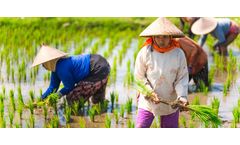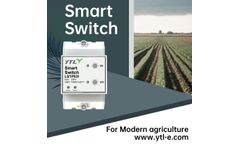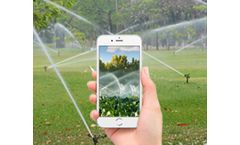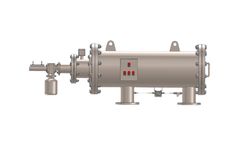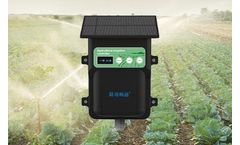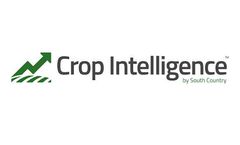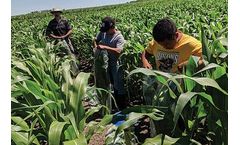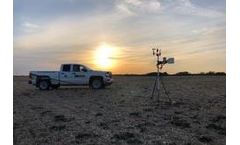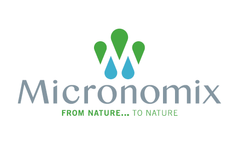Crop Watering Articles & Analysis
97 articles found
Biochar has a porous structure and large surface area, which enhances soil's ability to retain water and nutrients. This is especially beneficial in arid regions where soil moisture retention is critical for crop survival. ...
Less water means fewer crops, and fewer crops lead to more food insecurity. The latest analysis from the World Resources Institute (WRI) shows that a quarter of the world’s crops are grown in areas where water supply is highly stressed, unstable, or both. In fact, rice, wheat, and corn, which provide more ...
For generations, farmers have relied on chemical fertilizers to boost crop yields. However, these fertilizers come with a hidden cost: environmental damage. ...
Through the meter, farmers can understand the different electricity usage patterns of different fields, different crops, and identify excessive usage issues, allowing them to take timely measures to reduce electricity costs. For example, during irrigation, the meter can automatically control the irrigation equipment based on soil moisture and crop ...
It involves monitoring and controlling various factors such as soil moisture levels, weather conditions, crop water needs, and irrigation system efficiency to deliver water precisely when and where it is needed. ...
ByJXCT
High EC readings indicate high salt content, which can limit water movement and reduce crop rooting depth. Portable soil EC detectors allow farmers to identify areas of the field with poor water retention capacity, enabling them to adjust irrigation practices accordingly. This can help reduce water wastage and ensure that ...
ByJXCT
Abstract Irrigation is crucial for successful crop growth and yield, but traditional irrigation methods often result in water waste and inefficiency. ...
ByJXCT
This is particularly important in areas where water is scarce and crop production is limited by water availability. 2. Improve crop yields: Through precise water management, intelligent irrigation controllers enable farmers to optimize crop growth and increase yields. By providing the exact ...
California Almond Orchards: A study in California almond orchards found that smart soil sensor systems reduced water usage by up to 30% while maintaining crop yields. 2. South African Vineyards: In South Africa, smart soil sensor systems have been successfully implemented in vineyards, reducing water consumption by 20% and increasing grape yields ...
One of the critical components of successful agriculture is irrigation, which ensures that crops receive the water they need to thrive. However, using untreated or impure water for irrigation can have detrimental effects on crops and the environment. ...
Automated Scheduling: The controller enables automated scheduling based on factors such as crop type, soil moisture levels, weather conditions, and water requirements. ...
Water is a precious resource, especially in agriculture where efficient irrigation practices are essential for crop growth and yield. ...
Population growth and an increase in irrigated agricultural land lead to a greater need for water and energy, at a time when global warming and rising greenhouse gas emissions are posing a real environmental challenge. In this context, the benefits of smart irrigation, i.e., using the exact amount of water needed for each crop, help to optimize ...
ByIdrica
Thirdly, no pollution: pheromone is volatilized into the air through the carrier and is not in direct contact with crops, soil and water. Furthermore, it is relatively easy to decompose and does not bring harm to the environment, making itself a better choice for the production of green and organic agricultural products. ...
Adding Crop Intelligence to your tool kit creates a number of new opportunities for your farm. ...
“Part of the problem is people don’t trust the information,” says Ryan Hutchison of South Country Equipment in Saskatchewan. He was at Crop Connect 2019 in Winnipeg to give a presentation called Crop Intelligence — Trusting the Data. ...
It is also starting to become clear that subsurface replenishment of soil water is another important factor affecting crop yield in dry years. “A good example was the excellent crop yields under the drought conditions of 2017. Subsurface replenishment of soil moisture by high water tables over the growing season were ...
Fertility planning Fertilizer inputs represent a significant portion of a farm’s total cost of production. Knowing your crop available water and water driven yield potential can provide important context for fertility planning decisions. ...
Rural areas with irrigation districts and small municipal water systems face distinctive issues because of their size and geography. Water shortages in irrigation districts, for instance, mean that farmers need the most accurate information possible to understand how the water they pump is being used. ...
OBJECTIVES: Eliminate the negative effects caused by fusarium Recover stressed and dying plants from exposure to excess water Boost crop yields Improve quality of fruit, particularly in sweetness and crispiness. CASE STUDY #1: The client's melon crop was all but wiped out by heavy rains that submerged the crops in ...


